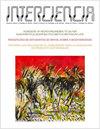低水平激光治疗通过TRPV1通道降低胶体银的抗癌潜力
IF 0.4
4区 综合性期刊
Q4 ECOLOGY
引用次数: 0
摘要
最近有一些研究特别研究了银对肿瘤性疾病的疗效。以及许多其他疾病。低水平激光治疗(LLLT)已被证明可以调节生物过程,并且有许多研究研究了LLLT的作用,LLLT目前用于治疗癌症。方法:培养乳腺(MCF7)和结肠(Caco-2)细胞,将其分为11个主要组。将细胞与胶体银孵育24小时。在MCF7和Caco-2细胞培养物上分别并一起进行胶体银和LLLT暴露。胶体银和LLLT对细胞凋亡的所有分子途径都有影响。结果:与对照组相比,胶体银组癌症细胞凋亡水平明显升高。在两种癌症细胞中,与对照组相比,瞬时受体蛋白香兰素1(TRPV1)通道刺激剂Cpsin给药导致细胞凋亡水平显著升高,在胶体银+LLLT组中,与胶体银单用组相比,细胞凋亡水平显着降低。结论:胶体银显著增加了乳腺癌和结肠癌癌症细胞的凋亡,而LLLT给药在两个波长上都减少了凋亡,并显著抑制了胶体银对这些细胞的凋亡作用。本文章由计算机程序翻译,如有差异,请以英文原文为准。
LOW LEVEL LASER THERAPY REDUCES ANTICANCER POTENTIAL OF COLLOIDAL SILVER THROUGH TRPV1 CHANNELS
Recently there are studies which particularly investigated efficiency of silver on neoplastic diseases. and many other diseases. Low level laser therapy(LLLT) has been shown to modulate biological processes and there are many studies that investigate the effect of LLLT, which is used in the treatment of cancers currently. Methods: Breast(MCF7) and colon(Caco 2) cells were cultured and cells were divided into eleven main groups. Cells were incubated with colloidal silver for 24 hrs. Colloidal silver and LLLT exposure separately and together performed on MCF7 and Caco 2 cell cultures. The effects of colloidal silver and LLLT were invastigated on all molecular pathways of apoptosis. Results: It was found that the levels of apoptosis in colloidal silver group were significantly increased in both cancer cells compared to control group. In both cancer cells, transient receptor protein vanilloid 1 (TRPV1) channel stimulator Cpsin administration resulted in significantly increased apoptosis levels compared to the control group, in colloidal silver + LLLT group the apopitosis level significantly reduced compared to colloidal silver-only group.Conclusions: It has been shown that colloidal silver significantly increases apoptosis in breast and colon cancer cells, however LLLT administration decreases apoptosis in both wavelength and suppressed apoptotic effect of colloidal silver significantly on these cells.
求助全文
通过发布文献求助,成功后即可免费获取论文全文。
去求助
来源期刊

Interciencia
综合性期刊-生态学
CiteScore
0.80
自引率
25.00%
发文量
1
审稿时长
4-8 weeks
期刊介绍:
Interciencia is the monthly multidisciplinary publication of the INTERCIENCIA Association. It is dedicated to stimulate scientific research, its humanitarian use and the study of its social context, specially in Latin America and the Caribbean and to promote communication between the scientific and technological communities of the Americas.
Interciencia has been published uninterruptedly since 1976. Its Founding Director, Marcel Roche (endocrinologist and sociologist of science) was editor until 2008, and thereafter Miguel Laufer (neurobiologist) has been in charge. It has been included since 1978 in the Science Citation Index and other international indexes, and since 2008 it maintains an open access electronic version with material from 2005 onwards.
The priority areas of the journal, without exclusion of other areas, are Agronomy, Arid Lands, Food and Nutrition, Biotechnology, Ecology and Environment, Energy, Innovation and Technology Transfer, Marine Resources, Non-renewable Resources, Science Education, Science Policy, Study and Sociology of Science, and Tropical Forests.
Interciencia publishes in Spanish, Portuguese and English research and review articles, communications and essays, all of which are subjected to peer review. Additionally, it includes non-refereed sections such as Editorial, Letters to the Editor, Open Town Hall, Book Reviews and Upcoming Events.
All the material submitted to the journal for publication and accepted by the Editorial Committee in view of its quality and pertinence is subjected to review by peer specialists in the corresponding fields of knowledge. Neither the INTERCIENCIA Association, nor the journal or the institutions to which the authors belong carry responsibility for the contents. Signing authors are responsible for the material published under their names.
 求助内容:
求助内容: 应助结果提醒方式:
应助结果提醒方式:


